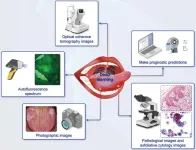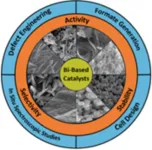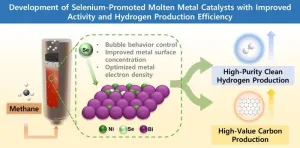(Press-News.org)
Oral cancer remains a serious global health concern due to its high morbidity and mortality rates, primarily caused by late-stage diagnosis. The presence of oral potentially malignant disorders (OPMDs) provides an opportunity for early intervention, as these lesions precede the development of oral squamous cell carcinoma. However, the accurate detection and classification of OPMDs remain challenging due to their diverse clinical presentations. Conventional diagnostic methods, including visual examination and histopathological analysis, have limitations such as subjectivity, invasiveness, and high dependency on expert interpretation. In recent years, artificial intelligence (AI) and deep learning (DL) have emerged as promising tools in medical imaging, offering automated, objective, and efficient diagnostic capabilities.
Deep Learning in the Diagnosis of OPMDs
Various deep learning models, particularly convolutional neural networks (CNNs), have been applied to different imaging modalities to improve the diagnosis of OPMDs. These models have demonstrated expert-level accuracy in detecting and classifying OPMDs using clinical photographic images, autofluorescence images, exfoliative cytology, histopathology, and optical coherence tomography (OCT) images.
Clinical Photographic Images: Deep learning algorithms such as DenseNet-169, ResNet-101, and EfficientNet-b4 have been employed to analyze clinical photographs of oral lesions. Studies indicate that these models can distinguish OPMDs from benign lesions and oral cancer with sensitivity and specificity comparable to expert clinicians. The use of smartphone-based imaging and DL models is particularly promising for resource-limited settings.
Autofluorescence Imaging: Autofluorescence imaging, which highlights biochemical changes in oral tissues, has been enhanced by AI-based analysis. Deep learning models trained on autofluorescence spectra can differentiate between normal mucosa, OPMDs, and malignant lesions, improving diagnostic accuracy.
Exfoliative Cytology: AI-assisted analysis of exfoliative cytology images has been explored as a noninvasive and cost-effective diagnostic tool. CNN-based models have shown high sensitivity and specificity in identifying cytological abnormalities associated with malignant transformation.
Histopathological Analysis: Pathological examination remains the gold standard for diagnosing OPMDs. Deep learning algorithms can automate the identification of dysplastic features in histological images, improving consistency and reducing interobserver variability. Segmentation models such as Mask R-CNN have been particularly effective in identifying nuclear changes indicative of malignant potential.
Optical Coherence Tomography (OCT): OCT provides high-resolution, real-time imaging of oral tissues, facilitating early detection of dysplastic and malignant changes. AI-based models have been trained to analyze OCT images, achieving diagnostic accuracy comparable to pathologists.
Deep Learning in Prognostic Prediction of OPMDs
Beyond diagnosis, AI models are being utilized to predict the likelihood of malignant transformation in OPMDs. Machine learning techniques, including random forest classifiers and survival models such as DeepSurv, have been used to integrate clinical, histopathological, and imaging data to assess cancer risk. These models provide individualized risk assessments, aiding in clinical decision-making and patient management.
Challenges and Future Directions
Despite its potential, the application of deep learning in OPMD diagnosis and prognosis faces several challenges. These include the need for large, standardized image datasets, variability in image quality, and algorithm limitations such as overfitting and interpretability issues. Future research should focus on developing multimodal AI systems that integrate imaging, molecular, and clinical data for more accurate and personalized diagnosis and prognosis of OPMDs.
Conclusion
Deep learning has demonstrated significant potential in improving the diagnosis and prognosis of OPMDs through various imaging modalities. AI-driven approaches offer a noninvasive, cost-effective, and objective means to enhance early detection, ultimately improving patient outcomes. As AI technology continues to advance, its integration into clinical workflows may revolutionize the management of OPMDs and oral cancer prevention.
Full text
https://www.xiahepublishing.com/2835-3315/CSP-2024-00025
The study was recently published in the Cancer Screening and Prevention.
Cancer Screening and Prevention (CSP) publishes high-quality research and review articles related to cancer screening and prevention. It aims to provide a platform for studies that develop innovative and creative strategies and precise models for screening, early detection, and prevention of various cancers. Studies on the integration of precision cancer prevention multiomics where cancer screening, early detection and prevention regimens can precisely reflect the risk of cancer from dissected genomic and environmental parameters are particularly welcome.
Follow us on X: @xiahepublishing
Follow us on LinkedIn: Xia & He Publishing Inc.
END
To develop a practical fusion power system, scientists need to fully understand how the plasma fuel interacts with its surroundings. The plasma is superheated, which means some of the atoms involved can strike the wall of the fusion vessel and become embedded. To keep the system working efficiently, it’s important to know how much fuel might be trapped.
“The less fuel is trapped in the wall, the less radioactive material builds up,” said Shota Abe, a staff research physicist at the U.S. Department of Energy’s (DOE) Princeton Plasma Physics Laboratory (PPPL).
Abe is the lead researcher on a new study published in Nuclear ...
The electrochemical reduction of CO2 has been recognized as a promising strategy to convert ambient atmospheric CO2 into valuable products. Bismuth-based catalysts have garnered the widespread attention of researchers due to their cost-effectiveness, low toxicity, and high natural abundance. Significant progress has been made toward enhancing the reactivity of catalyst structures through innovative synthesis techniques and engineering. Advances include the use of flow cells and membrane electrode assembly (MEA) cells to attain high cathodic current densities of over 200 mA cm-2 with superior ...
Researchers in South Korea have developed an advanced liquid metal catalyst incorporating selenium (Se) to enhance the efficiency of turquoise hydrogen production.
Turquoise hydrogen is generated via methane (CH₄) pyrolysis, producing hydrogen while yielding solid carbon as a byproduct, without emitting carbon dioxide (CO₂).
A research team led by Dr. Seung Ju Han at the Korea Research Institute of Chemical Technology (KRICT) has introduced selenium-doped molten metal catalysts (NiBi, CuBi) to significantly enhance methane pyrolysis efficiency. The technology demonstrates ...
A century of fire suppression, combined with global warming and drought, has led to increasingly destructive wildfires in the Western United States. Forest managers use tools like prescribed burns, thinning, mastication, and piling and burning to reduce fuel – live and dead trees, needles and leaves, and downed branches – that can feed intense wildfires. These methods aim to lower fuel levels, reduce crown density, and protect fire-resistant trees, fostering healthier, more resilient forests.
However, prescribed burning efforts haven’t kept up with the rapid buildup of surface fuel, creating a “fire deficit” – the gap between the amount of fuel that has ...
CLEVELAND—Researchers at Case Western Reserve University (CWRU) and University Hospitals (UH) will use state-of-the-art medical technologies they invented—and licensed to Lucid Diagnostics Inc.—to detect esophageal precancer, specifically Barrett’s Esophagus (BE).
BE is a change in the cellular structure of the esophageal lining typically caused by gastroesophageal reflux disease (GERD), also known as heartburn. The goal is to reduce the incidence of esophageal cancer (EAC).
EAC is a rare type of cancer with a high-morality rate—the cause of 2.6% of all cancer ...
Insilico Medicine ("Insilico"), a clinical stage generative artificial intelligence (AI)-driven biotechnology company, today announced the publication of a novel series of orally available covalent CDK12/13 dual inhibitors, as a potential option against refractory and treatment-resistant cancers. Published in the Journal of Medicinal Chemistry (IF=7.2), the study showcases the discovery of compound 12b, a potent, selective, and safe therapy targeting CDK12/13, empowered by Insilico’s proprietary generative AI platforms including PandaOmics and ...
For decades researchers have been exploring how to store data in glass because of its potential to hold information for a long time — eons — without applying power. A special type of glass that changes color in different wavelengths of light, called photochromic glass, holds promise for stable, reusable data storage. Now, researchers have developed a doped photochromic glass that has the potential to store rewritable data indefinitely, according to research published in ACS Energy Letters.
Certain types of ...
Inspired by the humble deep-sea sponge, RMIT University engineers have developed a new material with remarkable compressive strength and stiffness that could improve architectural and product designs.
The double lattice design was inspired by the intricate skeleton of a deep-sea sponge known as Venus' flower basket, which lives in the Pacific Ocean.
Lead author of the latest RMIT study into the structure, Dr Jiaming Ma, said extensive testing and optimisation revealed the pattern's impressive combination of stiffness and strength, mixed with an ability to contract when compressed.
It’s this last aspect – known as auxetic behaviour – ...
While we are remarkably capable of generating our own goals, beginning with child’s play and continuing into adulthood, we don’t yet have computer models for understanding this human ability.
However, a team of New York University scientists has now created a computer model that can represent and generate human-like goals by learning from how people create games. The work, reported in the journal Nature Machine Intelligence, could lead to AI systems that better understand human intentions and more faithfully model ...
A pioneering study has revealed new insights into the role of gastric bacteria in stomach cancer development that could pave the way for a more effective treatment of pre-cancer according to a study published today in Helicobacter.
The Royal Society and Cancer Research UK-funded research led by Dr Amanda Rossiter-Pearson at the University of Birmingham identified a crucial interaction between Helicobacter pylori and non-H. pylori bacteria in the pre-cancerous stage of gastric cancer.
Gastric cancer is the fourth ...







